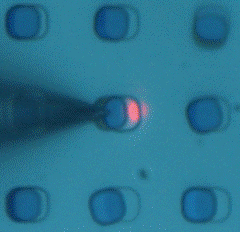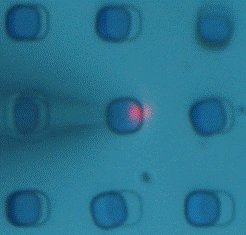A multidisciplinary research team led by Prof. Quanshui Zheng at the Center for Nano and Micro Mechanics (CNMM) in Tsinghua University has achieved a breakthrough in superlubricity. The research result, titled “Observation of microscale superlubricity in graphite”, has been published in the flagship physics journal Physical Review Letters. The first author Mr. Ze Liu is a PhD student under Prof. Zheng’s supervision.
Friction between solid objects, for example between a wheel and an axle, is a challenging topic that humans have struggled to control and minimize for thousands of years, and is one of the most challenging physics phenomena. Approximately one-third of the world's energy resources in present use are wasted overcoming friction in one form or another. In industrialized countries, the friction loss accounts for 5%-7% of GDP. With modern mechanical manufacturing developing toward high precision and miniaturization, and the resulting increase in the area-to-volume ratio of micro- and nano-mechanical systems, interfacial friction is becoming a dominant factor.
Superlubricity (or structural lubricity) is a phenomenon proposed by Motohisa Hirano in the early 1990s, where the friction force almost vanishes between two solid surfaces. The effect occurs when there is structural incommensuration between two crystalline solid surfaces, typically due to a relative rotation of their lattices, leading to the systematic cancelling out of the friction force on the atomic scale. Superlubricity is an ideal solution to reduce friction and wear, and thus its real and wide applications would mark a big step in civilization. But in the past twenty years, superlubricity was only observed on the nanometer scale and under high vacuum conditions. Such conditions significantly limit the practical application of superlubricity. It has even been suggested that superlubricity may not exist on a larger size scale.


Sheared Retracted
Recently, a multidisciplinary research group led by Prof. Zheng has made an experimental breakthrough. They have demonstrated superlubricity in micrometer scale and under ambient conditions. Their experiments are based on a novel self-retraction phenomenon that occurs in lithographically manufactured graphite mesas, observed for the first time in a couple years ago by members of the same group lead by Prof. Zheng in collaboration with Prof. Jing Zhu and Prof. Qikun Xue, and also published in Physical Review Letters in 2008. As shown in above figures, using a microprobe to shear the top of a graphite mesa, which is fabricated by using plasma ion etching high-quality graphite samples, leads to a delamination of the graphite mesa. After releasing the shearing force by raising the microprobe, the sheared top flake will spontaneously return back to its original position, driven by the reduction in surface energy that this produces.
The CNMM team could estimate the upper bound of the friction shear stress by comparing with the self-retraction force and the known contact area: 0.02-0.04MPa. This is far smaller than the widely accepted threshold for superlubricity, a friction shear stress of 0.1-1.0MPa. When deliberately rotating the top flake using the microprobe, the researchers found that at certain angles the self-retraction completely disappeared (a so-called lock-in effect, where the atomic lattices match up commensurately at the interface). These lock-in angles exhibit a clear 6-fold symmetry, which is consistent with the crystal symmetry of HOPG in the basal plane. Additionally, in the lock-in states, experimentally measured values of the friction shear stress are increased over three orders of magnitude, up to 0.1GPa.
These results provide compelling evidence that the self-retraction motion is a direct manifestation of structural superlubricity on the micrometer scale. A particularly significant observation, for the consideration of future practical applications, is that this structural superlubricity can be achieved under ambient conditions and exhibits excellent reproducibility.
This research has been headlined as the top news on April 5 in the popular website physicsworld.com (http://physicsworld.com/cws/article/news/2012/apr/05/nanomachines-could-benefit-from-superlubricity). In the report, the original discoverer of the superlubricity phenomenon, Prof. Hirano, commented “This is a big advance beyond the nanometre-scale superlubricity experiment. It could lead to implementing superlubricity [as a] lubricant for future practical use in mechanical engineering, including [devices for] saving energy.” Another specialist in superlubricity, Prof. Michael Urbakh of Tel Aviv University in Israel commented “I think this is very interesting and promising work, which could lead to a breakthrough in the field of superlubricity and more generally in the control of friction properties. This work may open a new way for preparation of graphite lubricants with improved lubrication properties.”
This research work is done in collaboration with Dr. Zhe Liu of Monash University in Australia, and Profs. Yao Cheng and Francois within CNMM. This project is supported by the NSFC, the National Basic Research Program of China, and the National 863 Project.

